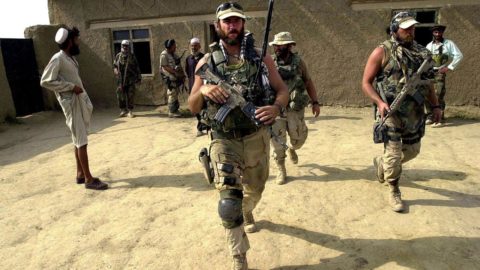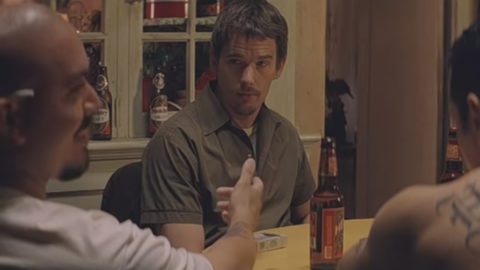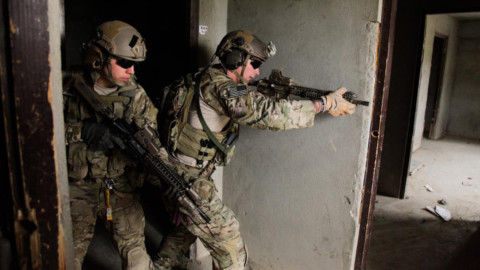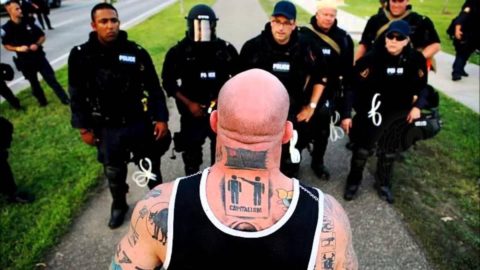What is the Perfect Self Defense Art?
Nathan Wagar
I am asked this question frequently, and my answer has changed over time as I have taken different points of view into consideration. It’s a complex topic, and like anything there are some hard rules as well as some variable ones. One could easily write an entire book on just this question alone, discussing everything from the myth of deadly techniques, to sparring, to the never ending street versus sport debate.
To avoid that, I will try to head some of those important discussions off at the pass with some fundamental criteria for any self defense system, in no particular hard order.
1. Fun
This may be obvious, but it is sometimes a bit surprising how often I see people supposedly training an art for self defense, and they don’t look like they are having much fun. Sometimes this is an instructor issue, and other times it is simply an unpleasant art that is focused more on scoping the guy next to you in line at the grocery store for hand grenades than actually making sure you are having a positive experience.
Physical skills are perishable, and so is motivation. If you aren’t motivated to train, then you won’t, and then you aren’t effective. It’s that simple. I would much rather see someone practicing what would in my opinion be a somewhat sub par but passable art, as long as it is enjoyable enough for that person to keep coming and polishing his or her skill set.
2. Competition
This needs to be qualified a bit. The competition should be on the micro in the gym, and the macro at a higher level against other gyms. This prevents confirmation bias and ensures that even if you don’t compete, your chances of training with people who do are quite high.
Next, the competition needs to be at full power within its rule set, and the system itself should be proven within some form of mixed martial arts arena. The reason is simple, namely that you don’t get to fight another wing chun guy on the street unless your gym partner owes you money. A system that is proven against other styles of attack at a higher level has shown itself to be adaptable, and so it can be modified accordingly.
Finally, competition has the necessary effect of creating athletes that are physically conditioned, and have skills that are transferable to a nonlinear environment like a real attack with an expanded rule set. This is why competition is necessary. A competition art breeds conditioned athletes that are ready to compete against ill intent. If you are out of shape even when regularly training, then you probably have not been competing in the micro or the macro against someone that has conflicting goals.
3. Consistent
By consistent I mean internally consistent. There should be no split between what you are taught and how it looks live in competition. Techniques can of course be modified, but the fundamental structure and sparring dynamics should be the same. Otherwise, you are quite simply developing two different skill sets, linear and nonlinear, and these approaches don’t mesh.
We want our training time to be cohesive, so that we are constantly honing our skills. There are far too many systems that teach a variety of esoteric techniques only to look like sloppy kickboxing in competition. This is usually followed by an unanswerable “No True Scotsman” debate tactic regarding the legitimacy of the master, but all that is really beside the point. You are not that master, and you need to know that what you do live is consistent with what you are told you can do live.
4. Depth
A good self defense system ideally has a fundamental simplicity, and yet a depth of application. This is the hallmark of any nonlinear-friendly style. Boxing has a core set of hand strikes, but infinite complexity, and likewise grappling can be boiled down to a core set of positions and movements that are chained together. These core fundamentals serve as static systems or reference points that we can return to in the chaos of the moment, with the more dynamic variables being flexible enough to branch off and deal with unforeseen conditions.
If your system does not have a fundamental simplicity, then the reality of a violent attack will even out the balance in an unpleasant way. No martial art can really be thought of as a complete self defense art. All of them have deficiencies in technique, appropriate practitioner audience, and more.
However, the real world brings many variables of its own that absolutely must be addressed, and these variables will inevitably shave away your litany of techniques into a core few anyway, that you may or may not prefer to use. Then is not the time to be choosing not just the appropriate technique, but the appropriate application of that technique.
We see this even within the mixed martial arts world. A generic jack of all trades approach will necessarily be simplistic technically in order to deal with the high number of external variables, whereas those that stay more specialized as strikers or grapplers have a depth in application against the other variables, even though they have a smaller set of tools. Have a core fundamental tool set so that you can learn to apply it to real world variables when you work your self defense material.
5. Clinch
In complexity science, the edge or boundary between two adjacent systems is the most chaotic. This only makes sense, after all if you were standing in between two people arguing, you are in the position of the most chaos because you have to deal with two people screaming and fighting on either side. The key though, is that you hold the keys to the argument escalating or deescalating, because you are the gatekeeper. Edges in other systems are no different, we may not want to be there, but we need to control the edge.
We can think of distance itself as a system, with fight distances acting as subsystems of standup, clinch, and ground. All of these are possibilities in a fight, but the edge range between standup and ground is the clinch. If you are a striker, you need to control the clinch in order to not end up on the ground, and as a grappler you need to control the clinch to take the fight to the ground.
The clinch is the most transitive, exhausting, and critical aspect of both an armed as well as an unarmed encounter. Your style must be able to manipulate the clinch against other systems in a competitive environment, and you can see that this immediately rules out an entire laundry list of systems that would be unable to work their game against even your average high school wrestler.
I can teach a boxer with a good clinch game the basics of ground escapes to get back to his skill set, and likewise with a grappler. What I can’t do is teach a Kali practitioner that has only ever done hubud drills the sheer pressure and drive that is necessary to dominate the most critical range in a violent encounter.
Summary
Again, this discussion can go on forever, but I will give a few parting thoughts. All of these criteria can be further broken down, rearranged, qualified, etc. The end goal is always the same, however. Your system needs to be adaptable, effective, and enhance your quality of life. Hopefully all five of the above conditions give you something to think about in your own martial journey, as you think about what your goals are, whether your system achieves them, and if not, how the above considerations ensure that you can find one that does.










 Rob Brotzman
Rob Brotzman  Nathan Wagar
Nathan Wagar